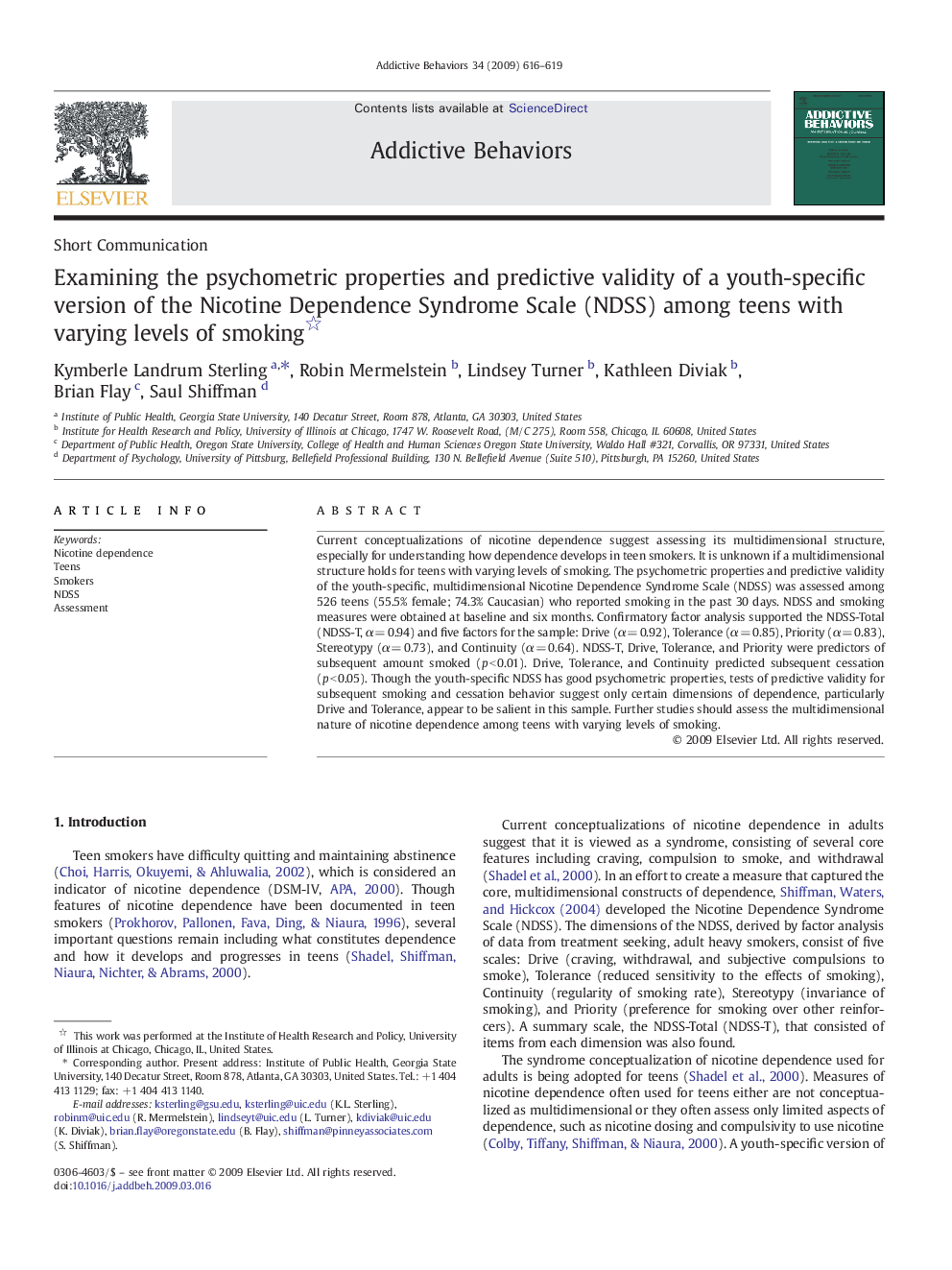| Article ID | Journal | Published Year | Pages | File Type |
|---|---|---|---|---|
| 899401 | Addictive Behaviors | 2009 | 4 Pages |
Current conceptualizations of nicotine dependence suggest assessing its multidimensional structure, especially for understanding how dependence develops in teen smokers. It is unknown if a multidimensional structure holds for teens with varying levels of smoking. The psychometric properties and predictive validity of the youth-specific, multidimensional Nicotine Dependence Syndrome Scale (NDSS) was assessed among 526 teens (55.5% female; 74.3% Caucasian) who reported smoking in the past 30 days. NDSS and smoking measures were obtained at baseline and six months. Confirmatory factor analysis supported the NDSS-Total (NDSS-T, α = 0.94) and five factors for the sample: Drive (α = 0.92), Tolerance (α = 0.85), Priority (α = 0.83), Stereotypy (α = 0.73), and Continuity (α = 0.64). NDSS-T, Drive, Tolerance, and Priority were predictors of subsequent amount smoked (p < 0.01). Drive, Tolerance, and Continuity predicted subsequent cessation (p < 0.05). Though the youth-specific NDSS has good psychometric properties, tests of predictive validity for subsequent smoking and cessation behavior suggest only certain dimensions of dependence, particularly Drive and Tolerance, appear to be salient in this sample. Further studies should assess the multidimensional nature of nicotine dependence among teens with varying levels of smoking.
